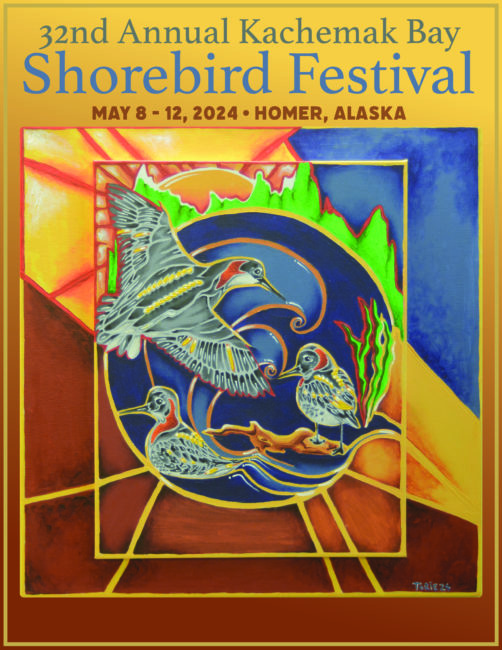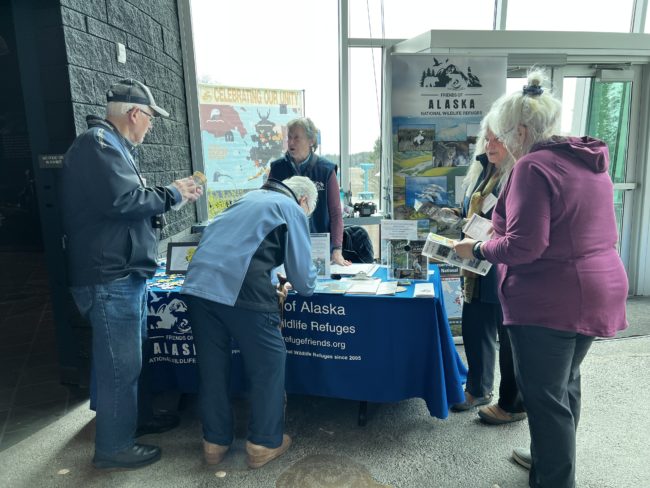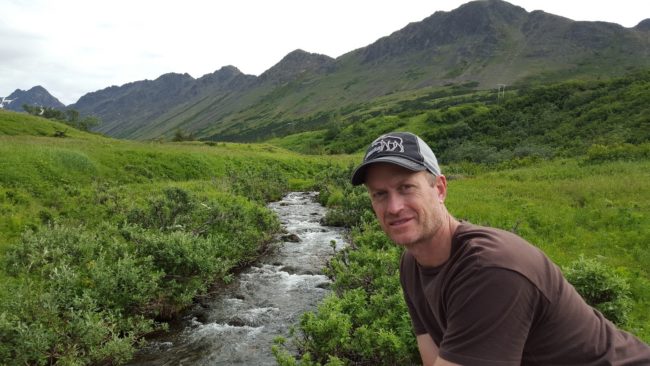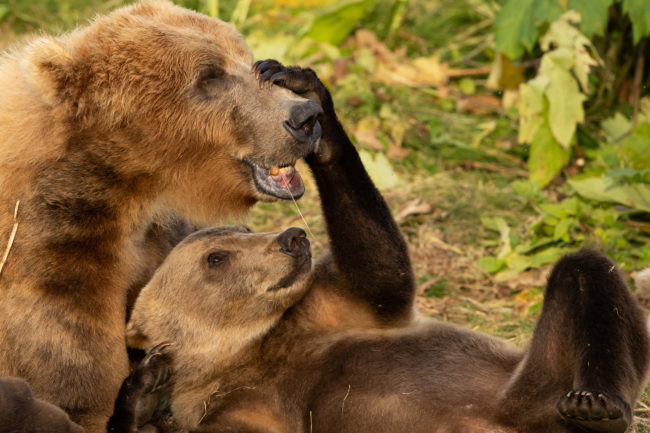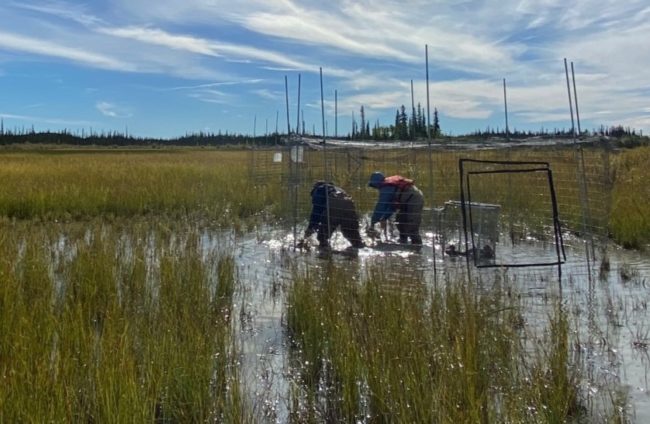Month: April 2024
Get Out on a Refuge, Do Some Good, Volunteer!
- Share your knowledge of Alaska at Tetlin’s Interagency Visitor Center
- Band ducks on the Tetlin Refuge.
- Real science: aging black brant at Izembek.
- Or come on down to Homer May 8 – 12 for the Kachemak Bay Shorebird Festival co-sponsored by Friends and the Alaska Maritime Refuge. Sign up for Friends outreach here and for festival events here.
- Spring clean a refuge – Kenai April 26-27, Alaska Maritime Homer April 20
- Spread the good word about refuges at Outreach Booths at events in Seward, Soldotna, and Homer.
Conserving the Whole Lifecycle of Salmon: Gravel to Gravel in Alaska
Presented by Boyd Blihovde: Senior Advisor for Conservation, USFWS Alaska
This presentation was recorded. Watch below:
Salmon have been in trouble in western Alaska and for a long time. The people of the rivers who depend on salmon for much of their food resources and cultural identity are hurting. Boyd Blihovde, head of the Fish and Wildlife Service’s new Gravel to Gravel Initiative, will share with us this situation and his hopes for what this new approach will bring. Boyd, then manager of the Yukon Delta National Wildlife Refuge, was in the thick of it in 2022 when salmon conservation discussions reached a peak in the villages of Western Alaska and beyond. Protecting Pacific Salmon’s entire lifecycle (from the spawning grounds to the ocean, and back to the spawning grounds) was not a new concept.
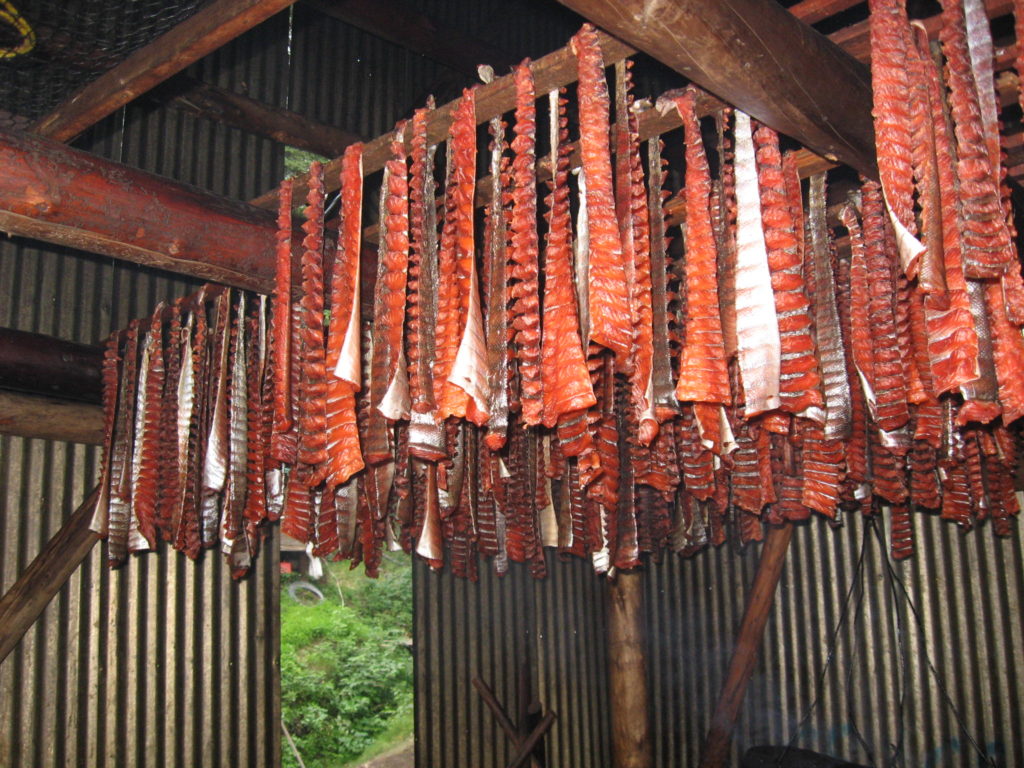
Yukon River smokehouse. Putting up salmon for the winter. pc S. Zuray
However, during several hearings and listening sessions with villages and tribes, it became clear that rebuilding salmon runs across Alaska was critical for indigenous people and other rural subsistence users. Leadership from the Department of Interior heard this message from the Tribes and responded with Gravel to Gravel. It is one of nine “Keystone Initiatives” in the United States that are being prioritized by the Department of Interior to focus agency attention and resources on priority conservation issues. The primary goal of Gravel to Gravel is, through tribal engagement and participation, to restore salmon streams and ensure food security to subsistence users within the lower-Arctic, Yukon, and Kuskokwim region of Alaska and into Canada. However, Boyd added that “we hope our efforts just bring back salmon numbers for everyone and all users.” Our vision is: “With Tribes centered, we unite to care for salmon, from gravel to gravel.
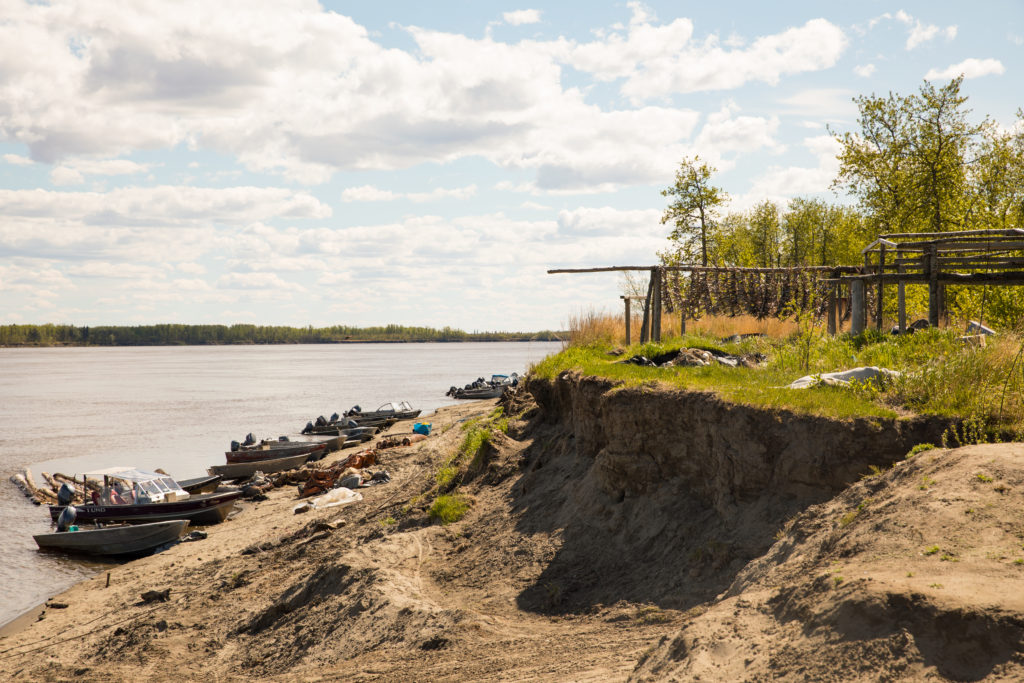
Fish drying racks and fishing boats are a key part of life in the salmon dependent villages of western Alaska pc USFWS
Bio: Boyd Blihovde is the Senior Advisor for Conservation at the USFWS Regional Office in Anchorage. He was the Refuge Manager at the Yukon Delta National Wildlife Refuge based in Bethel, Alaska, from 2020 to August 2023. Prior to moving to Alaska, Boyd was the Refuge Manager at Laguna Atascosa National Wildlife Refuge, located in Los Fresnos, Texas. He began his Service experience in 1989 as a GS-3, Youth Conservation Corp member at Merritt Island National Wildlife Refuge eventually moving on to the University of Central Florida, receiving a bachelor’s and master’s degree in biology. Boyd studied and researched sea turtles on Archie Carr Refuge Canaveral National Seashore, and Puerto Rico and conducted research and wrote his thesis on the terrestrial behavior and site fidelity of gopher frogs.
More recently, Boyd and his wife Gisela have focused more attention on their twins (Ava and Taylor). Boyd writes “The kids have been a lot of fun and have changed our focus from work and self to family and fun.”
April Advocacy Report
The mission of Friends is to support the 16 national wildlife refuges, which of course includes advocating for the wildlife that make these refuges their home. We are extremely concerned by the current predator control actions of the State of Alaska on state lands, which directly impacts adjacent federal lands and the animals that live on and migrate through wildlife refuges.
Last year, the Alaska Board of Game expanded a plan for predator control in game units adjacent to Togiak and Yukon Delta national wildlife refuges to include wolves and both brown and black bears. The Mulchatna Intensive Management Operational Plan was developed in response to a very real problem: the collapse of the Mulchatna caribou herd. It should be noted that the decline of the Mulchatna herd has continued despite the killing of over 450 wolves for predator control. Biologists are clear that the cause of the caribou population collapse is much more complex than the predator-prey dynamic and in fact, studies suggest a stronger link to forage quality and quantity resulting in lower pregnancy rates and higher caribou calf mortality. These issues are compounded by higher incidence of brucellosis, causing higher abortions and stillbirth rates. Despite these facts, an expanded predator control plan was implemented in 2023 with a plan to kill an estimated 15-20 brown bears.
Sadly, in just the first year of the plan, 94 brown bears, including several year-old cubs and 11 younger still-nursing cubs, were killed. This represents an estimated 74% of the brown bear population in the plan area, and significantly more than the planned take of 15-20 bears. In addition, five black bears and five wolves were killed. While the control program may not have taken place on the refuges proper, bears don’t know boundaries and roam widely so it’s very likely that bears of Togiak and possibly Yukon Delta refuges were killed during this 17-day killing spree.
In an opinion piece in the Anchorage Daily News on August `14, 2023, 34 retired Alaska wildlife managers and scientists including several of our members said they did not believe the Mulchatna predator control decision was underpinned by the best available science, nor was it adequately vetted with the public prior to implementation.
This expanded predator control plan is scheduled to continue through 2028. The wildlife of Alaska is its most precious resource and this indiscriminate killing can’t be allowed to continue.
We urgently ask our members who are Alaska residents to contact your state representatives and express your outrage
-
that the implementation of the Intensive Management plan for Caribou Units 9B, 17, 18, 19A and 19B has resulted in the deaths of nearly 4 times the projected number of bears in the plan and that the Board of Game should scale back the plan accordingly and:
-
that Legislators ensure new members better represent the diverse interests of Alaskans and wildlife as the current Board of Game (BOG) is heavily weighted to hunting and trapping interests (the Governor appoints and Legislators approve all BOG members).
You can read the profiles of the Board of Game members here. There are no working biologists on the Board of Game. The opportunity to remedy this situation could lie with the two members of the BOG whose terms are up this June. You can also express your concerns to Fish and Game Commissioner Douglas Vincent-Lang or ADFG Director of Wildlife Conservation Ryan Scott regarding the problems with this specific Intensive Management plan.
Do You Want to Visit a Refuge? Volunteer, Volunteer, Volunteer!!!
Volunteer, Volunteer, Volunteer!!! by Poppy Benson, Vice President for Outreach
Setting up a Starlink solar system, deploying rat traps in the Pribilofs and teaching first aid in McGrath are three of the most unusual volunteer requests from the refuges this year. And that always fun project of banding ducks for a week on the Tetlin Refuge is back for a 4th year as well as brant aging surveys on the Izembek Refuge in October. Tetlin Refuge is also looking for visitor center help in Tok in 30 day shifts over the summer. Shorter term projects include helping with an Anchorage public meeting on rat eradication in the Aleutian Islands, building rat traps in Homer for the Alaska Maritime, a cleanup at the Maritime Visitor Center on April 20 (and expect one on the Kenai Refuge in May dates, TBD), and two big events – the Kachemak Bay Shorebird Festival and the Kenai Sports and Recreation Show.
Friends cosponsors the Festival, May 8 – 12 in Homer, and volunteers are needed for Friends outreach– staffing our Outreach Table and the Birders’ Coffee–and for Festival events. The Festival is our biggest project and traditionally our best source of new members and, its really fun. Come on down to Homer and help out. May 4 and 5 is the Kenai Sports and Recreation Show in Soldotna. Friends are needed to help the Kenai Refuge with its activities and to do outreach for Friends and the Refuge.
Some of these projects need help right away so don’t delay in checking them out – the Starlink system, rat trap assembly and the first aid instructor for Innoko Refuge would ideally happen in March – April. You can find all projects listed here including who to talk to for more information. Applications are needed for most projects and you must be a member for most projects. You can join or renew here.
In addition, refuges with visitor centers – Kodiak, Kenai, Yukon Delta in Bethel and the Alaska Maritime in Homer – can always use help. Contact the refuge.
Yes, there are fewer volunteer opportunities this year than last as only five refuges requested our help as opposed to seven last year. I can only speculate that this is due to the refuges not having a budget as Congress only passed the budget last Friday. And then there are the significant staff shortages. It takes staff and money to plan projects. Hopefully, with the budget resolved we might yet see some more projects for this year.
